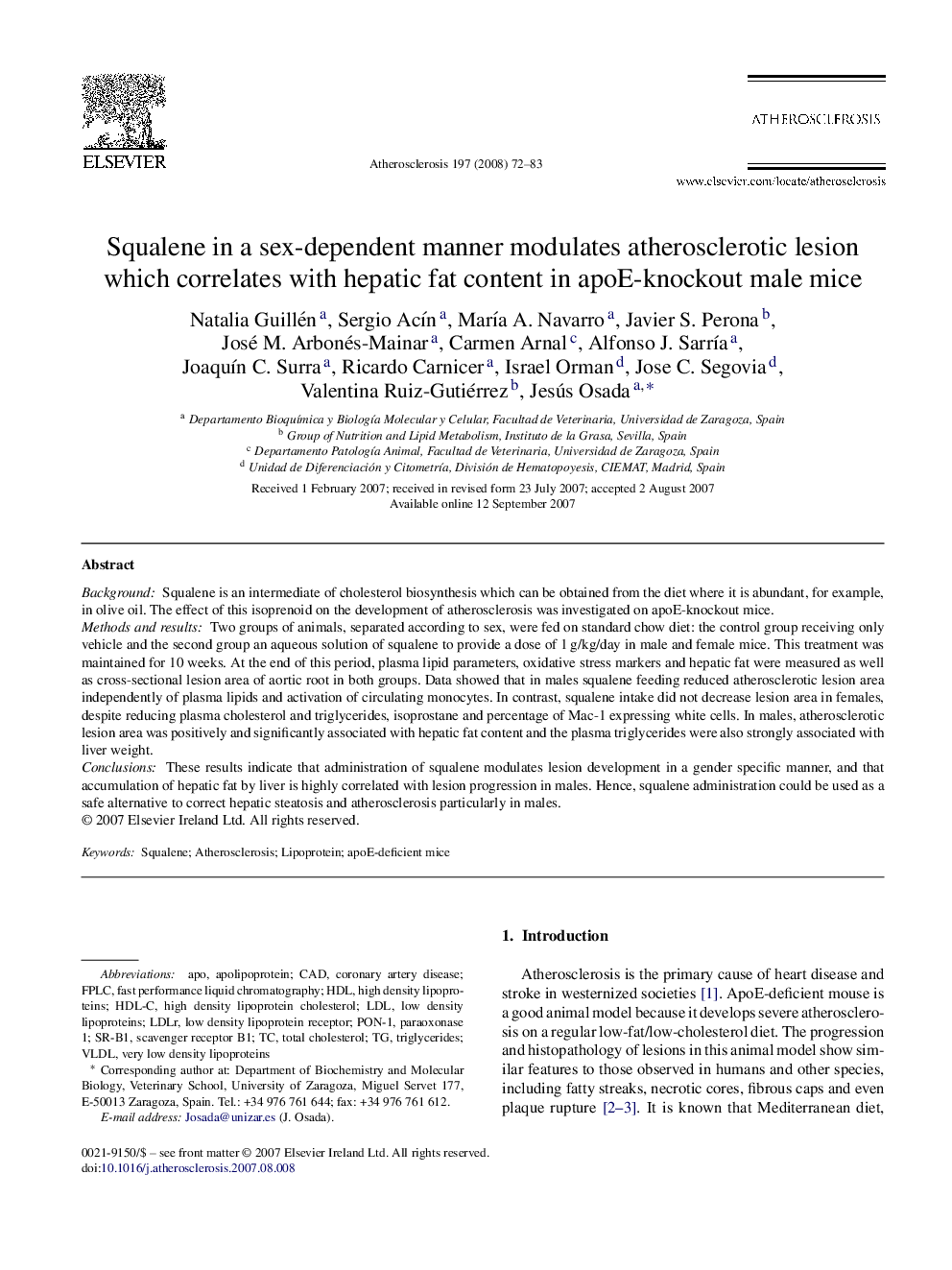| Article ID | Journal | Published Year | Pages | File Type |
|---|---|---|---|---|
| 2894725 | Atherosclerosis | 2008 | 12 Pages |
BackgroundSqualene is an intermediate of cholesterol biosynthesis which can be obtained from the diet where it is abundant, for example, in olive oil. The effect of this isoprenoid on the development of atherosclerosis was investigated on apoE-knockout mice.Methods and resultsTwo groups of animals, separated according to sex, were fed on standard chow diet: the control group receiving only vehicle and the second group an aqueous solution of squalene to provide a dose of 1 g/kg/day in male and female mice. This treatment was maintained for 10 weeks. At the end of this period, plasma lipid parameters, oxidative stress markers and hepatic fat were measured as well as cross-sectional lesion area of aortic root in both groups. Data showed that in males squalene feeding reduced atherosclerotic lesion area independently of plasma lipids and activation of circulating monocytes. In contrast, squalene intake did not decrease lesion area in females, despite reducing plasma cholesterol and triglycerides, isoprostane and percentage of Mac-1 expressing white cells. In males, atherosclerotic lesion area was positively and significantly associated with hepatic fat content and the plasma triglycerides were also strongly associated with liver weight.ConclusionsThese results indicate that administration of squalene modulates lesion development in a gender specific manner, and that accumulation of hepatic fat by liver is highly correlated with lesion progression in males. Hence, squalene administration could be used as a safe alternative to correct hepatic steatosis and atherosclerosis particularly in males.
